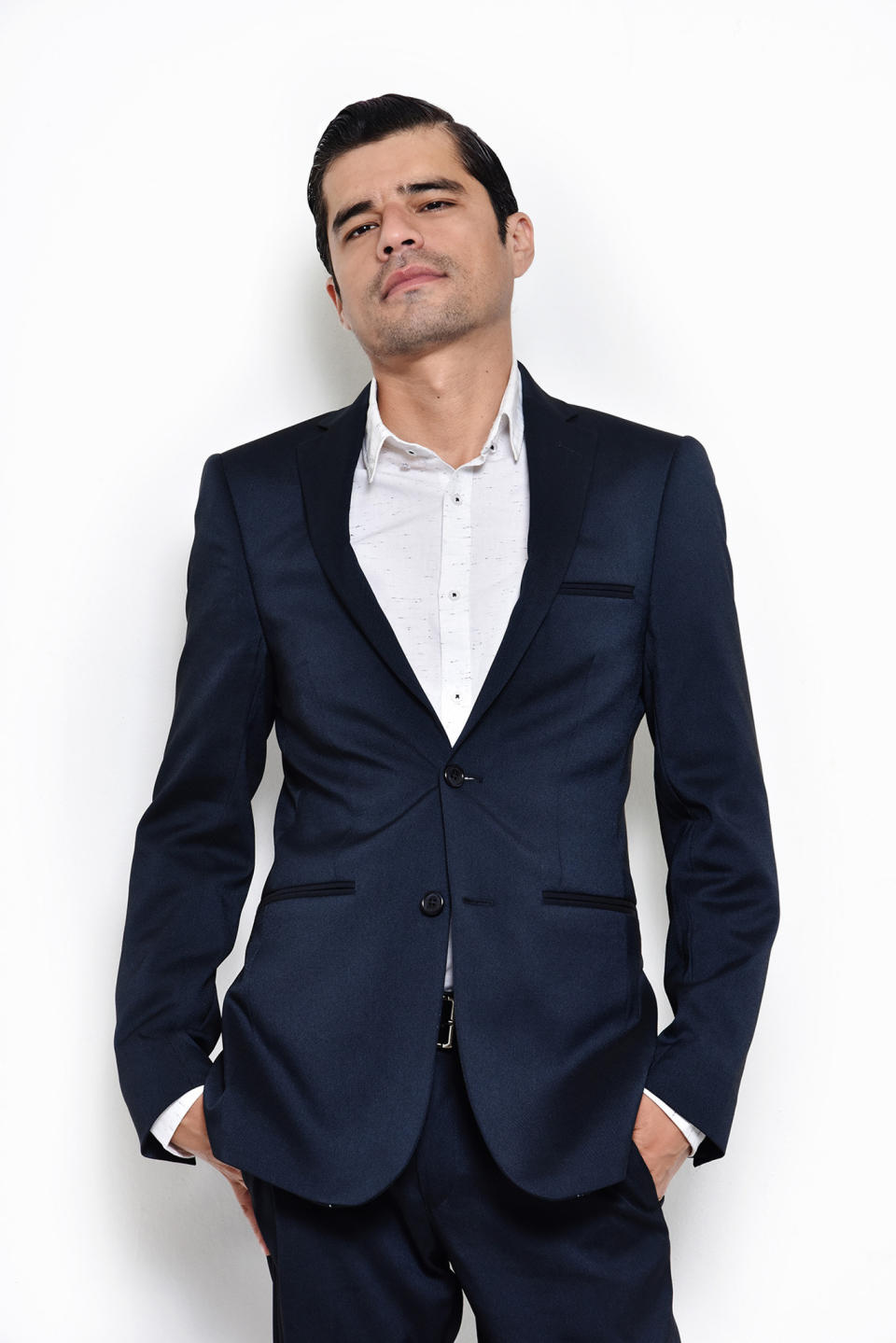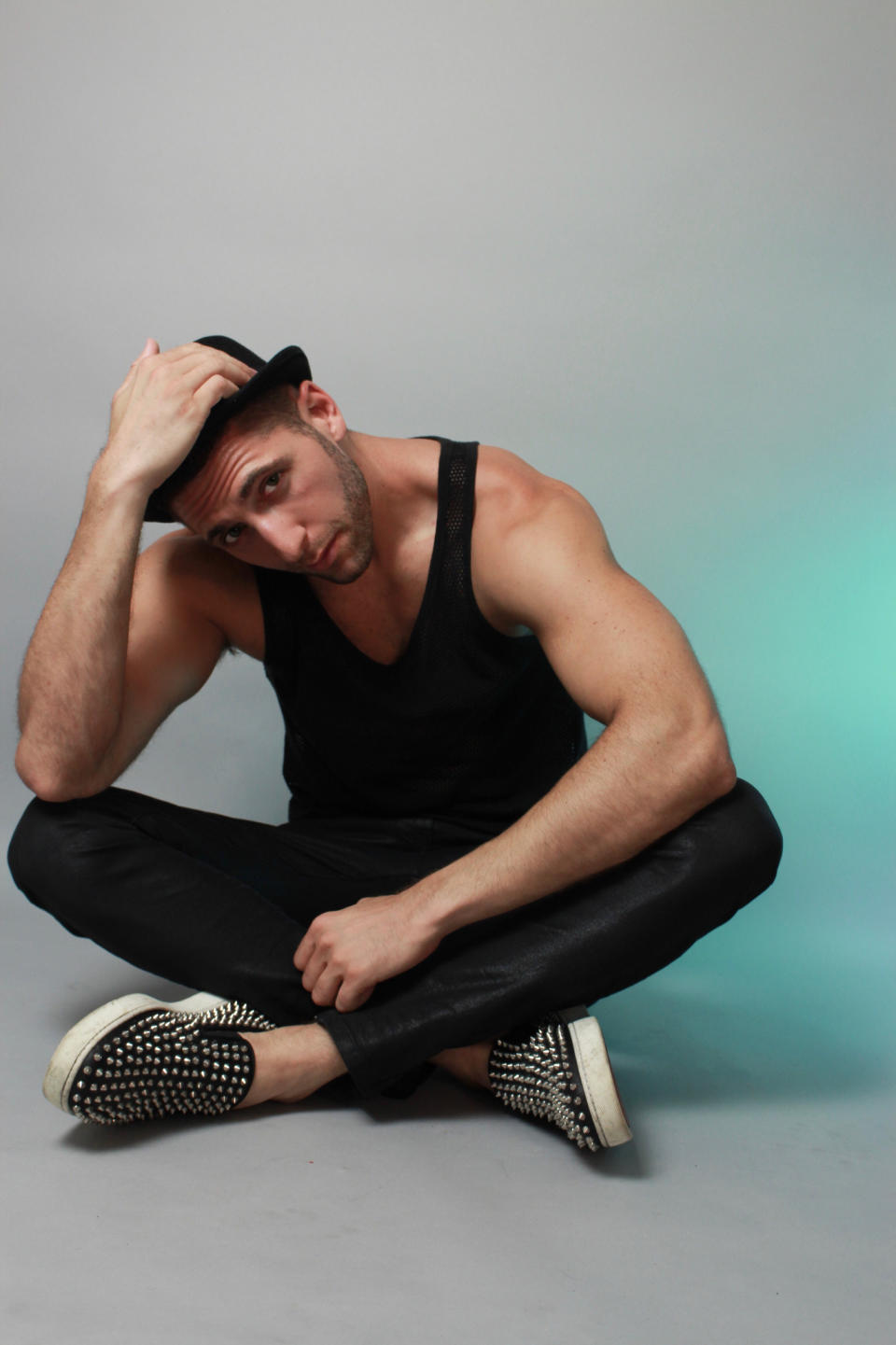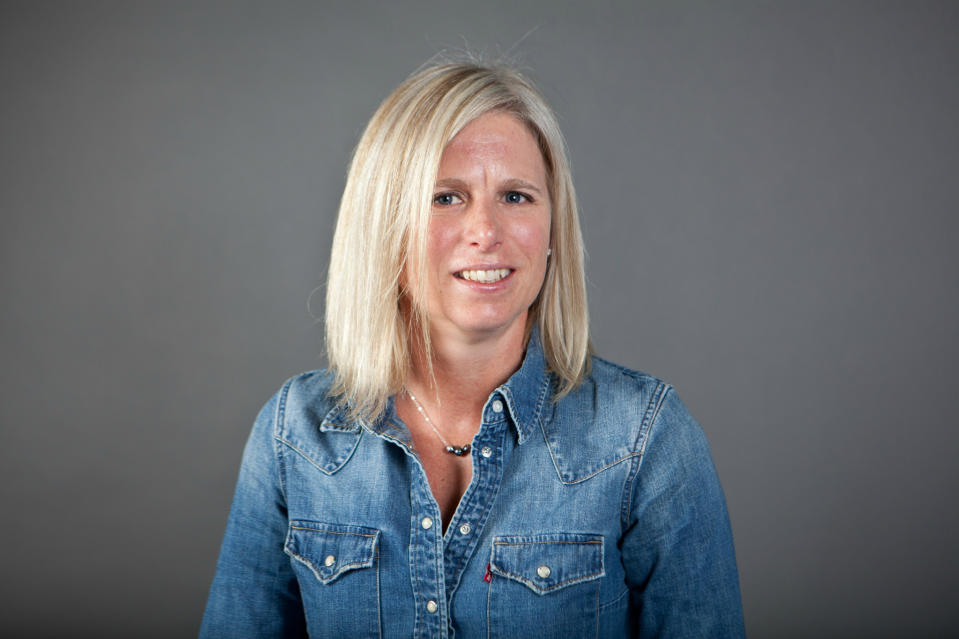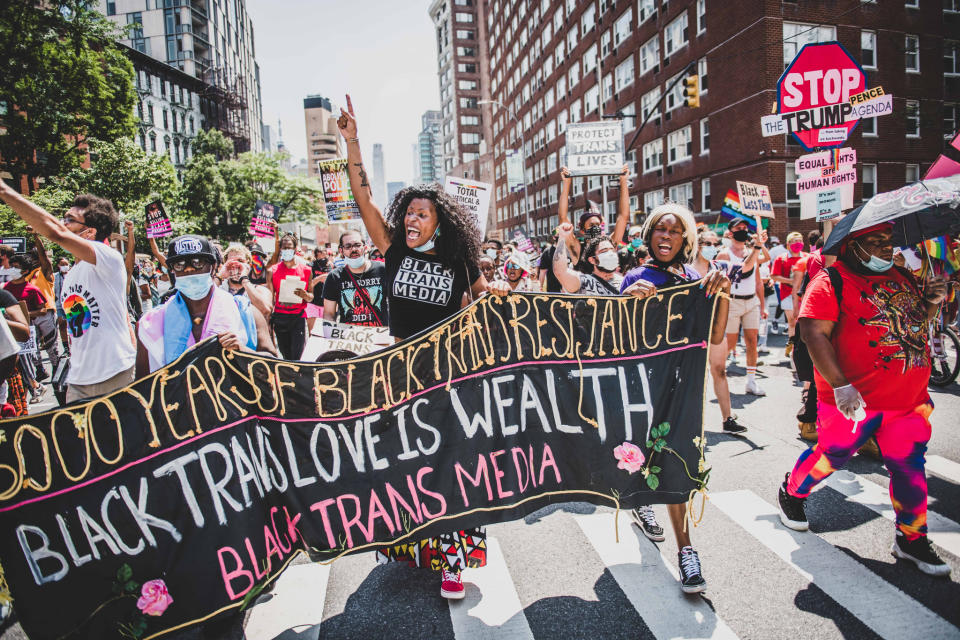Has ‘Rainbow Capitalism’ Taken Over Pride?

The rainbow flags are waving pretty hard right now.
Pride month has not so much taken off as taken over in the corporate world, with companies rushing to stand as allies of the LGBTQ community with rainbow logos, trans-focused marketing and more.
More from WWD
But as the Pride celebrations have become increasingly visible, complaints of Rainbow Capitalism have also risen — with companies seen as chasing LGBTQ discretionary dollars in June and then going away for another 12 months. Some companies, however, do engage with the LGBTQ community year round, though many in the consuming public don’t see those less-visible efforts.
Pride can be complicated and it’s more than just a parade — it has a history of being a movement in the fight for LGBTQ rights and protections, led largely by people of color and those who suffered but fought unwaveringly. Pride itself is based on a rebellion, a way for the LGBTQ community to come together and voice current issues the community faces. While the gay rights movement existed before, the Stonewall riot ignited it into a global protest that now has become hospitable to big business, an event in which corporations see an opportunity for branding and visibility.
“It’s not so much that Pride has gone off course, it’s that the discussion on what it means usually reflects the goals and victories of the Queer Liberation movement itself,” said writer, filmmaker and activist Leo Herrera. “From the first parades, there has always been a tension within the movement in terms of acceptability politics. As more conservative or traditional factions within the movement achieve their goals (i.e. marriage, military service, etc.) it sometimes can feel the more vulnerable in our community (our QPOC [queer people of color], trans family, queer elders, disabled, immune-comprised) can be left behind.”

Courtesy Photo
Of late, there’s been enough corporate hubbub and commercialization around Pride that the Heritage of Pride march in New York now has a counterbalance in the Queer Liberation March. Organized by the Reclaim Pride Coalition, the June 27 event is intended as a protest to “reclaim the spirit and meaning of Pride to better represent the LGBTQIA2S+ community.” (Heritage of Pride did not respond to a WWD query.)
“There was just this need to go back to how it began,” said Jay Walker, cofounder of the coalition. “It’s about returning the Pride march back to the community.”
Since the inaugural Queer Liberation March in 2019, which garnered 50,000 attendees, the message has been clear: No corporate sponsorships or “rainbow-covered anything,“ no police presence and no posturing politicians.
Walker said there isn’t one LGBTQ core but 1,000 different groups and that the idea is to, at least once a year, come together as “one big messy, but loving community.”
And he sees the corporate impulse as out of place in Pride, and that all the true connections companies have are hard to untangle.
“It’s hard to completely trust any corporation that is painting themselves in rainbows,” Walker said. “Who has the time to go and research every single corporation and find out every single thing they’re doing?
“It’s kind of a joke,” he said of the onslaught of rainbow-themed products. “It’s not overwhelmingly offensive. It’s completely understandable in a sense that we are a capitalist society and that’s what capitalism does. There’s also little proto gay and proto queer kids, that means something for them to walk into that store with their mom [and see Pride-themed collections]. That’s not a bad thing.”
Adding to that, Reclaim Pride Coalition’s Saje Liese said, “We live in late-stage capitalism, selling merch for Pride — yes it’s good because in a way we are becoming more accepted, [but] it still contributes to the same system that oppresses us, prioritizing profit over people, capital over community.”
Criticism from within the LGBTQ community around the corporatization and commercialization of Pride is varied and valid, but a key concern among some is around the assumption that commercial visibility equals victory in the movement for LGBTQ rights. That it helps in the fight against the kinds of discrimination that can mean fewer opportunities, lower wages, homelessness, unemployment and violence for those in the LGBTQ community at rates much higher than their cis-straight counterparts.
“As a creative, you see a lot of lazy product executions all year round but particularly with larger brands during Pride there seems to be an absence of creativity in their collections. Rainbows are cute but how can we elevate that?” said mixed media artist Portis Wasp.
For event producer Jake Resnicow, elevation means great participation in pushing for equity.

Courtesy Photo
“I’m not opposed to corporations getting involved in Pride if they are also here for the fight,” he said. “They must make long-term, authentic commitments, not just roll out rainbow logos. The next time that there is a legislative change that threatens our rights, brands should take a public stand and put queer and trans people of color front and center.”
The business world’s reckoning with Pride has been a fits-and-starts evolution that came early to some and is still on the way for others. It mirrors the broader move to more purpose-driven business models that look beyond the almighty dollar to see companies as global citizens with a broad range of responsibilities.
Some companies get it, others not quite yet.
“Every company is on their own journey with inclusion,” said RaShawn Hawkins, deputy director of the Human Rights Campaign’s Workplace Equality Program. “The companies that do it right are authentic and sincere about where they are in the journey.
“The wrong way to do it would be to only show your advocacy during [Pride] month, but you’re not active in the community any other time,” she said.
At least one right way to do it is to start at home — for companies to check their own internal processes, offer trans-inclusive health care, address diversity at the board level and connect with the LGBTQ community within.
“Having these affinity groups [of employees] internally is what companies need to make sure they stay grounded,” Hawkins said. “I don’t think you’re really leveraging your diversity of thought if you’re not leveraging these affinity groups.”
Affinity groups — also called employee resource groups — are typically employee-led and intended to give a certain demographic a voice within a company while fostering strong connections all around.
It’s a setup that can facilitate a kind of conversation between the LGBTQ community inside a company with the broader LGBTQ world using the corporate tools of brand, marketing and Pride-themed collections, rainbow or not.
Companies could also consider looking beyond the rainbow when it comes to support.
“There was a point in history where being visibly LGBTQ+ friendly was a really risky business decision, it wasn’t accepted in the social norm, nowadays that is not enough — we need to see meaningful work,” said Billie Simmons, chief operations officer for Daylight, an LGBTQ-owned banking operation catering specifically to the community. “What are you doing for the 20 percent LGBTQ+ people of color who are unbanked or under-banked, how are you helping them, what money have you donated to grass roots causes rather than large floated charities that aren’t doing anything meaningful on the ground?”
Daylight, for one, offers its customers a prepaid Visa spending card that allows trans/non-binary individuals, or anyone who wants it, to have any name they want printed on their card, which does not have to match their legal identity, and that is also reflected across all the touch points — accounts, statements and customer support. Daylight’s currently in development app will also allow LGBTQ individuals to connect, support one another, share goals and get financial advice and support.
At Levi Strauss & Co., the company’s vice president of public affairs Anna Walker said it’s about a holistic approach to supporting the LGBTQ community and the issues it cares about throughout the year. And the company has a long track record to lean on.

Courtesy Photo
Levi’s was the first Fortune 500 company to give health benefits to unmarried domestic partners in 1992, it was the only California business to file a friend of the court brief in support of same-sex marriage in the California Supreme Court in 2007 and it has been speaking out regularly on LGBTQ issues.
The company’s LGBTQ employee resource group in Europe released a collection of their favorite looks in October that Walker said was well received internally and externally and gave the group a platform for telling their story.
Levi’s Pride 2021 collection is tagged “All Pronouns, All Love,” and includes the Liberation Trucker Jacket, a Liberation Jumpsuit and the Liberation Short-All, a light wash short overall with rainbow graphic detailing.
So Levi’s is showing up for Pride this month, but as Walker said, “For us, it isn’t just this month.”
And for Walker, the wall-to-wall Pride is a kind of progress.
“The issue has gone so far along now, people are questioning whether it’s corporatized,” said Walker, who would now also like to see more engagement. “I would love to get to a point where we sign an amicus brief and there are 400 other companies, if there were other companies already raising their hands and wanting to be there.”
Also leading the way is Macy’s Inc., where Jeff Gennette is one of the vanishingly few LGBTQ chief executive officers leading a major American corporation.
The culture that helped support Gennette as he rose through the ranks and put him in the corner office is on display in the company’s broader diversity efforts.
“We’ve been at this for a long time and have a long history of supporting the LGBTQ community,” said Shawn Outler, Macy’s chief diversity officer. “For us, diversity is foundational and driven by our values — acceptance, respect, integrity and give back.”
The emphasis on giving back is highlighted in Macy’s Pride + Joy campaign this month, which benefits The Trevor Project, the world’s largest suicide prevention and crisis intervention organization for lesbian, gay, bisexual, transgender, queer and questioning young people.
Outler said Macy’s has raised $1.6 million for The Trevor Project over the past two years and has been supportive of LGBTQ causes for 30 years.
“We don’t just show up in one arena, in one avenue, in one aspect of our business at one time a year. You see us actively engaged throughout the year and also we make a concerted effort to show up in our marketing in a very inclusive way,” Outler said. “It really is about companies thinking about — for us, our values — and thinking about a community and our colleagues.
“Pride is a month that we amplify our efforts, but it isn’t the only time we show up,” she said.

Leandro Justen/Courtesy
Tommy Hilfiger and Calvin Klein parent PVH Corp., which also works with The Trevor Project, set its Pride agenda for the year last month, with a focus on “education and awareness, community engagement and creating inclusive products throughout the year.”
“This is not a new thing to PVH, this is not a superficial endeavor,” said Lance LaVergne, the company’s chief diversity officer and senior vice president of global talent acquisition and associate experience.
Selling stuff is also not a new thing for PVH, or any other fashion company. That puts companies that have long supported Pride with broad efforts in something of a tight spot when it comes to commercializing the celebration..
“It’s an interesting question,” LaVergne said. “If you believe what you make is good and valuable and you want to tailor what you offer, I think that’s important and you should do that.”
But it has to be done with a sensitive eye.
“It should be more than just slapping a rainbow flag or a Pan African flag on your garment,” LaVergne said. “What are the specific elements of that community and how are we not only designing and producing products or experiences, but are we actually showing representations of that community?”
PVH uses its employee resource groups as a sounding board as it sets strategy, picks partners and causes.

Courtesy Photo
“What is really important is to identify a handful of partnerships and opportunities that we think of as an organization that will be meaningful and impactful,” LaVergne said. “You can really try to boil that ocean, but most organizations don’t, budgets are limited, manpower hours are limited.”
He said that focuses the company on: “What are the things that are most impactful? What can you do to leverage your own platform to make a difference?
“You can take a more focused approach and pick two, three partners and try to develop more meaningful relationships and have a deeper impact in that way,” LaVergne said. “For most organizations, diversity is an evolving construct, but it’s one where you have to start somewhere.”
And starting — or if you’re under way, keeping the pressure on — is the order of the day.
More from WWD:
How Fashion and Beauty Brands Are Giving Back for Pride Month 2021
LGBTQ Community More Skeptical of Brands’ Pride Initiatives Than Total Population
Sign up for WWD's Newsletter. For the latest news, follow us on Twitter, Facebook, and Instagram.

